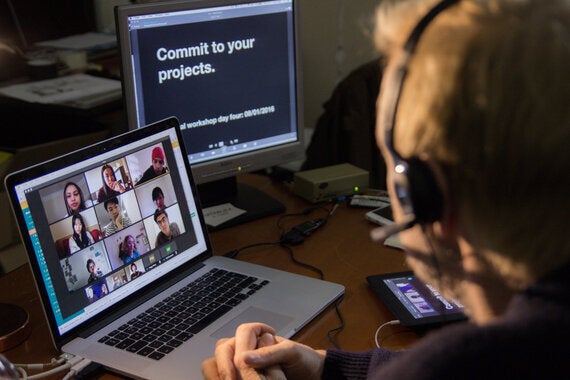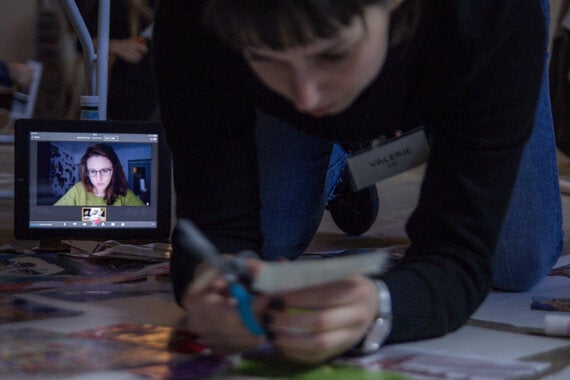
High tuition fees coupled with a globally competitive job market makes it hard not to think about Higher Education in terms of a 'return on investment'; not so much a rite of intellectual passage, but an instrumental step in the path towards employment - after all, you'd want to be sure it was worth it if you were going to leave with £40,000 of student debt, right? Students graduating from creative degrees face the prospect of a precarious, freelance, portfolio career. Whilst the UK creative sector is expanding, growing 8.9% in 2014, it's notoriously difficult to find a stable job, and many companies are propped up by unpaid internships. The economic value of the creative industries is clear (£84.1 billion per year to the UK economy), but employers' preferences for STEM subjects may make creative degrees less attractive for prospective students.
If we want to encourage young people to undertake a creative education, we need to articulate its value to them, and instil confidence that they can have a prosperous creative career once they have graduated. So how should art and design institutions prepare students for the world of work and help them make a living from what they are good at? How should we convince students that an art and design education is worth it?
I was recently a fly on the wall at Modual, a 2-week educational experience designed by creative veteran Fred Deakin, Chair of Interactive Digital Art at University of the Arts London. Modual was a 2-week pop-up design studio, which introduced art and design students to working in the creative industries, equipping them with the digital, entrepreneurial and collaborative skills needed to thrive. It brought a classic art school model (learning by doing) into the digital age by blending online and offline collaboration. 60 students from subjects including interaction design, architecture, graphic design and fine art invented, prototyped and pitched creative projects that had an aspect of positive social change or innovation.

In the shabby chic River Rooms at Somerset House, a backstage production team manned 4 stations wired up with webcams, so students could dial in and participate whilst in college, on buses, at home or in cafes. Of 60 students, only 25% were in the physical room at one time. Participants used Slack to communicate, with 26,000 messages and 16GB of files uploaded over 13 days. Communications were made in a real-time stream of emojis, memes and digital camaraderie - a far cry from clunky institutional email systems, or virtual learning environments. Fuze was used to get participants together in virtual meeting rooms, sharing screens and working on digital files in real time.
Clearly these technologies facilitated a new kind of learning experience, giving students a flavour of what it's like to work in a creative start-up. But the radicality of the event wasn't about hardware, software, or even the internet. It was about Modual's focus on the bigger reasons why art and design matters - because it has the potential to make the world a better place by taking a creative approach to solving its problems. Learning how to use Slack or Fuze wasn't the point - it was what the technologies enabled that mattered - i.e. cross-disciplinary collaboration. One team produced a beautifully slick promotional video, and I was convinced they had a film or advertising student amongst them. I was wrong - none of them had ever made a video before. They learned Adobe After Effects overnight from YouTube, because they cared about the project and their team. This is what employers want - people who care enough about their projects to learn whatever skills it takes to make them happen.
The overarching theme was positive social change, and the students' projects all embodied this. Some were delightful: Ideabox - a series of lectures by kids, Environ, virtual reality enabled memories for the elderly, Glue, Tinder for creative collaboration, Ventureteers, a platform for short term volunteering opportunities. But even the projects themselves weren't as important as the collaborative process. Many of the students said this was the aspect they valued the most - realising the power and potential in learning to work with others.
They also saw the great value in turning their skills to something beneficial for society. As Fashion Illustration student Bel Aguas put it: 'perhaps most importantly, I have learned to design with a mind to positive change (rather than personal satisfaction).'
It's not certain how this kind of experiment can be scaled or replicated on a long-term basis. But I could see students transforming before my eyes as they saw how their practices could make an impact on society. Yes, they learned skills that will help them get a job, but they also learned to care about each other and the world. Now that's worth it.
Photography: Rafael Filomeno